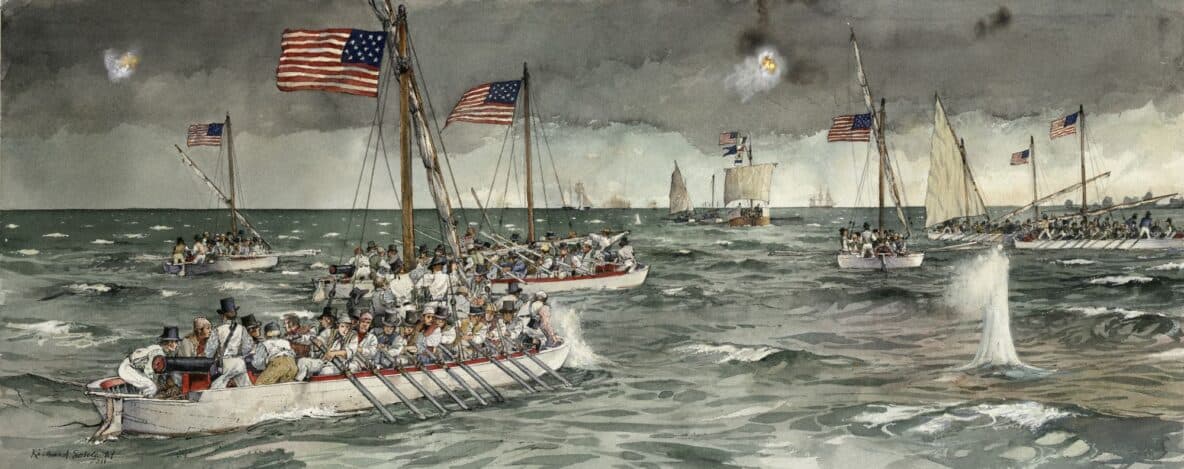Barney’s Chesapeake Flotilla clashed with the British on June 8 – 10 and again on June 26th in the Battle of St. Leonard Creek. The battle, which is the largest naval engagement in the history of Maryland, took place where the Patuxent River meets the mouth of St. Leonard Creek, right off the shore of Jefferson Patterson Park and Museum.
It was part of the larger Chesapeake campaign that was fought by the British to control the Chesapeake Bay and disrupt American trade.
The battle was fought between a flotilla of American armed barges, commanded by Joshua Barney, and a British naval force that was seeking to capture the barges and control the Chesapeake Bay. Barney’s flotilla, known as Barney’s Flotilla, consisted of several armed barges that were heavily armed with artillery and manned by a combination of sailors and soldiers. The British force was led by Rear Admiral George Cockburn, who was known for his aggressive tactics and his disregard for American property.
The battle began in the early morning hours, with the British attacking the American barges from both land and sea. The Americans fought back fiercely, using their artillery to repel the British attack. Despite their resistance, the Americans were eventually forced to retreat and burn their barges to prevent them from falling into British hands.
The battle was a significant victory for the British, as it allowed them to control the Chesapeake Bay and disrupt American trade. However, the battle was also a testament to the bravery and determination of the American forces, who fought against overwhelming odds to defend their country. The battle is remembered today as one of the key engagements of the War of 1812, and it is remembered as a testament to the bravery and determination of the American people.
In conclusion, the Battle of St. Leonard’s Creek was a significant event in the history of the War of 1812. The battle was a testament to the bravery and determination of the American forces, who fought against overwhelming odds to defend their country. Today, the battle is remembered as a key engagement of the War of 1812, and it is remembered as a testament to the bravery and determination of the American people.

